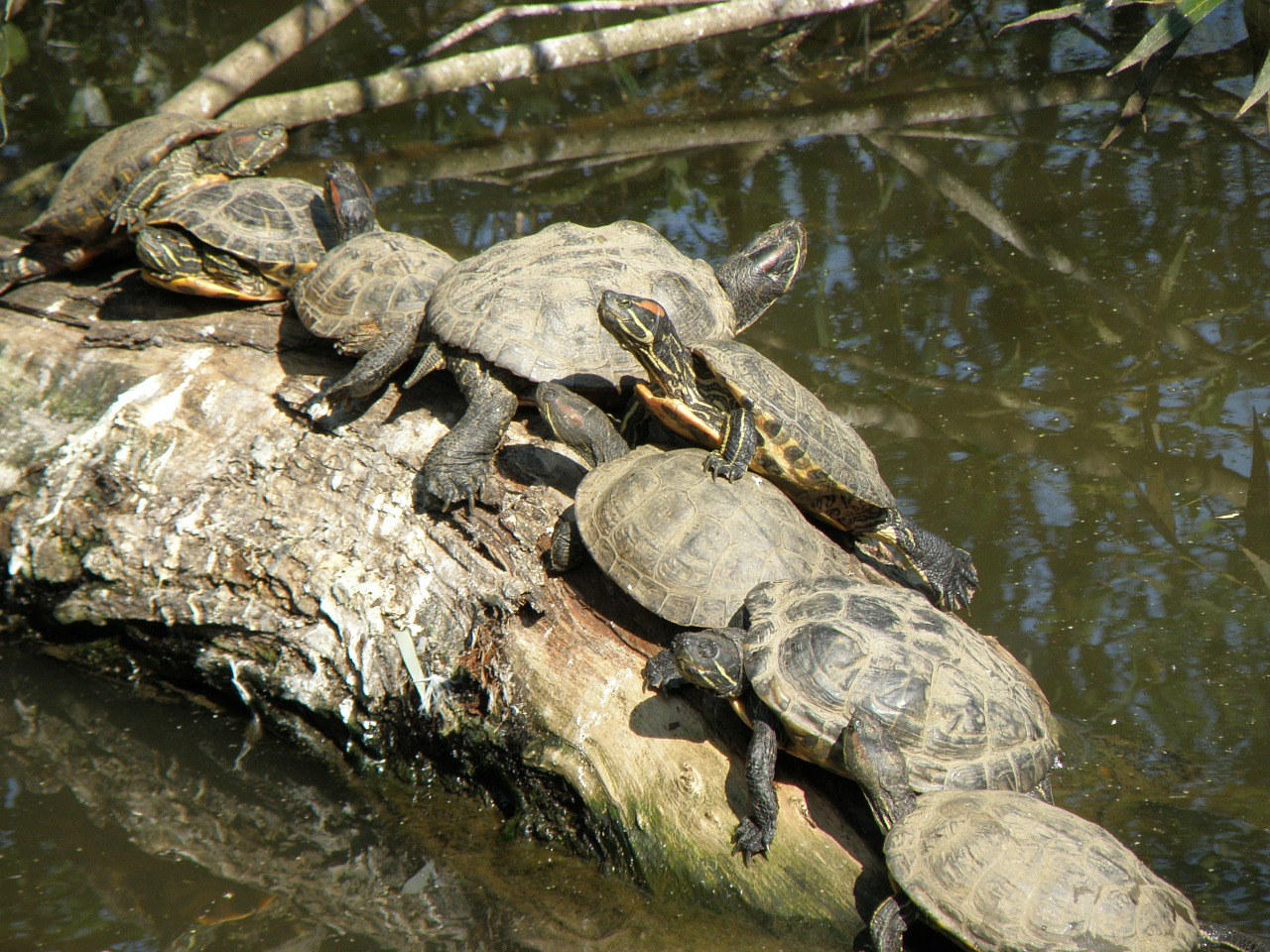Red-Eared Slider

Red-Eared Slider
(Trachemys scripta elegans)
Tags: Aquatic
Identification and Reproduction
Identification:
- The red-eared slider is a freshwater terrapin that is native to the Mississippi River Basin of North America.
- This species gets its name from the red mark behind its eye, and its habit of sliding off rocks or logs into the water when it is startled.
- The rest of the head and legs are dark with yellow stripes, and the shell is greenish brown.
- The underside (plastron) is pale yellow and will develop a dark blotchy pattern with age.
- Red-eared sliders can grow up to 28 cm (11 inches) long.
Reproduction:
- Courtship is highly stereotyped, with males fluttering their long fore claws on and around the face and head of females.
- Nests are excavated in friable sand or soil; sometimes considerable distances from water.
- Clutch size can vary from 2-19 eggs, depending on the size of the female, but typically averages 7-13.
- Females can lay up to 4 clutches in a single year.
Habitat & Ecology
- They are found in freshwater rivers, swamps, ponds and ditches.
- Red-eared sliders preferring quiet water with a soft, muddy bottom, abundant vegetation, and suitable basking sites.
- Individuals can frequently be seen basking on rocks, logs, vegetation masses, and on the banks adjacent to the water.
- This species is highly adaptable, and even tolerates the slightly salty (brackish) conditions.
- Like all reptiles, red-eared sliders are cold blooded, so they must pull themselves out of the ponds and bask in the sun to warm up their bodies so they can properly digest their food.
- They can live to 50 years or older.
Impacts
- Red-eared sliders have devastating impacts on pond ecosystems because they eat almost anything including water plants, molluscs, insects and small fish.
- They compete for basking locations and crowd out our native species, specifically the Western painted turtles which are endangered.
- These turtles also may be carriers of disease from the pet trade and can transfer it to native turtles.
- Pet red-eared sliders have also been known to carry and transfer salmonella to humans.
Management
- Red-eared sliders are the most popular turtles in the pet trade. Before purchasing a pet turtle, plan for its long term care. A reminder that they can live over 50 years old.
- If you have a pet turtle that you no longer want - Please do not release into our natural environment. Donate to your local pet store or school.
Resources
Download BC's Invasive Species Alert for Red-eared Slider here.
To compare the invasive Red-eared Slider with the native Western Painted Turtle please refer to this ID guide.
For more information on the impacts the Red-eared Slider causes check out this article.
Header photo (Valerio Orlandini).





